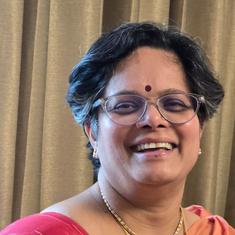From the early 1990s, regional parties have been ascending on the national stage and seemed to have made themselves essential to the formation of any national government. India had six prime ministers in less than 10 years in the 1990s due to the fragmentation of the party system and the decline of the Congress. Yet the rise of the BJP in the late 1990s and the creation of the BJP-led National Democratic Alliance and then the Congress-led United Progressive Alliance platforms stabilised the party system. Since then, the regional parties have been indispensable allies for both the ruling party and the opposition.
In terms of vote share, the collective strength of the regional parties rose steadily between the 1970s and 1990s, to stabilise near a majority of votes in 1996. Since then, their collective vote share has increased only gradually and is currently at 46.6%, if one removes the independent candidates.
With the BJP winning a majority, the 2014 Lok Sabha contradicts this long-term trend. Interestingly, the total vote share and seat share of regional parties remains exactly the same as in 2009 – 46.7% and 212 seats in both elections. Five regional parties have a tally of 15 or more MPs this time, compared to six in 2009.

However, the distribution of seats has changed quite drastically. Many important regional parties have been wiped out by the BJP – notably the Samajwadi Party and the Bahujan Samaj Party. Other regional parties have gained considerably, crushing their opposition, as in West Bengal and Tamil Nadu. In terms of vote share, most regional parties have maintained their previous scores or have recorded a slight decrease. In Uttar Pradesh, both the Samajwadi Party and Bahujan Samaj Party still garnered between them 42% of the total vote share. In those states, regional parties seem to have balanced each other out.
If one looks at the combined scores of the national parties, the tally increases only slightly, from 47.3% in 2009 to 50.4% in 2014. The seat share does not vary as much and goes from 322 seats in 2009 to 326 seats in 2014. Only seven parties including the All India Trinamool Congress, SP, AIADMK, BSP and Communist Party of India (Marxist) have over a 3% of vote.
After two decades, the Dravida Munnetra Kazhagam, which had 18 seats in the last Lok Sabha, does not have a single MP from Tamil Nadu. The Communist Party of India, the Maharashtra Navnirman Sena and BSP are also among those that drew a blank. Nitish Kumar’s Janata Dal (United) in Bihar was reduced to two MPs. This clearly shows the concentration of votes among a smaller number of players.
The share of independent candidates has decreased, from 5% to 3%. Of a total of 8,241 candidates this year, 3,234 were independents. Only three got elected: two in Kerala and one in Assam. This is the lowest number of independent MPs since Independence. All independents account together for 16.7 million votes.
It remains to be seen what the opposition will look like and what the more successful regional parties will do once the prime minister is sworn in. The last time the AIADMK allied with the Centre in 1999, it ended bitterly. In retrospect, Mamata Banerjee’s comment back in March that the TMC would be open to working with the AIADMK chief Jayalalithaa or BSP leader Mayawati in a post-poll scenario, but would not support Modi or even ally with the Congress, can be seen as significant.
However, an opposition that consists of the combined forces of regional parties comes at a price. Regional parties that govern states need the support of the Centre for large projects and fiscal packages. The AIADMK will want to have some leverage once the government starts dealing with Sri Lanka – and, more crucially, on river interlinking.
But one could argue that the formation of a majority government could in fact be good news for these regional parties, who might be set to become the primary and autonomous voices of dissent in parliament. For that, they must bank on the disappointment that the Modi-led government is bound to generate, given the heightened expectations his victory has generated.
The regional parties may not be very relevant at the Centre but remain very relevant at the ground level. Only future assembly elections will tell us if we truly have a trend reversal.










